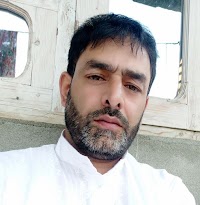Our Past II | JANDKNCERT
Tracing Changes Through a Thousand Years | History VII | Questions and Answers
Chapter 1: Tracing Changes Through a Thousand Years
Let’s Recall
Question 1. Who was
considered a ‘foreigner’ in the past?
Answer: In the past, a ‘foreigner’ meant someone who was not part of the
same society or culture, like a traveler or stranger from another place or country.
Question
2. State whether true or false:
Answer:
(a) We do not find
inscriptions for the period after 700. – False
(b) The Marathas asserted their political importance during this period. – True
(c) Forest-dwellers were sometimes pushed out of their lands. – True
(d) Sultan Ghiyas Uddin Balban controlled Assam, Manipur and Kashmir. – False
Question 3. Fill in the blanks:
Answer:
(a) Archives are places where manuscripts are kept.
(b) Epigraphy is the study of inscriptions.
(c) The Rajput were a group of warrior people.
(d) Sanskrit was the language of administration under the Cholas.
Question 4. What were
some of the major religious developments during this period?
Answer:
·
Rise of Bhakti
and Sufi movements.
·
Worship of a
personal god became popular.
·
Saints like
Kabir and Baba Guru Nanak preached devotion and equality.
Question 5. What kind
of changes took place between 700 and 1750?
Answer:
·
Political: Rise
and fall of kingdoms and empires.
·
Cultural:
Emergence of new languages and traditions.
·
Economic: Growth
of towns and trade.
·
Religious:
Spread of Bhakti and Sufi ideas.
Question 6. What do you
mean by ‘archives?
Answer: Archives are places where manuscripts and historical records are
stored and preserved.
Let’s
Understand
Question 6. In what
ways has the meaning of the term “Hindustan” changed over the centuries?
Answer:
·
In the 13th
century, “Hindustan” referred to the lands around the Indus River
(by Minhaj-i-Siraj).
·
Later, Babur
used it for the entire Indian subcontinent.
·
Over time, it
became more of a geographical and cultural identity, especially during British
rule.
Question 7. How were
the affairs of jatis regulated?
Answer:
·
Jati Panchayats
or councils enforced rules on marriage, work, and rituals.
·
Jatis were part
of local governance and functioned within larger village or town
administrations.
Question 8. What does
the term pan-regional empire mean?
Answer: It refers to an empire that spans across a large region
or multiple areas, bringing diverse territories under a single
political rule.
Example: Mughals or Cholas built pan-regional empires.
Let’s
Discuss
Question 9. What are
the difficulties that historians face in using manuscripts?
Answer:
·
Manuscripts were
handwritten, often with different scripts and abbreviations.
·
Many had damaged
pages, inconsistent spelling, or were hard to read.
·
Copied versions
could have errors, making interpretation difficult.
Question 10. How do
historians divide the past into periods? Do they face any problems in doing so?
Answer:
·
Historians
divide history based on economic, political, and cultural developments,
like Ancient, Medieval, and Modern periods.
·
However, these
labels are Eurocentric and may not accurately represent Indian
history, leading to oversimplification.






.webp)




Leave your comment here.